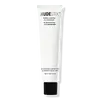What's inside
What's inside
 Key Ingredients
Key Ingredients

 Benefits
Benefits

 Concerns
Concerns

 Ingredients Side-by-side
Ingredients Side-by-side

Water
Skin ConditioningPropanediol
SolventIsoamyl Laurate
EmollientGlycerin
HumectantNiacinamide
SmoothingSalicylic Acid
MaskingSqualane
Emollient3-O-Ethyl Ascorbic Acid
Skin ConditioningPolyacrylate Crosspolymer-6
Emulsion StabilisingSilica
AbrasiveSodium Hydroxide
Buffering1,2-Hexanediol
Skin ConditioningCaprylyl Glycol
EmollientSodium PCA
HumectantXanthan Gum
EmulsifyingMelaleuca Alternifolia Leaf Oil
AntioxidantSodium Phytate
Centella Asiatica Extract
CleansingAzelamidopropyl Dimethyl Amine
AntimicrobialPlatycarya Strobilacea Extract
Skin ConditioningPsoralea Corylifolia Fruit Extract
Skin ConditioningSophora Flavescens Root Extract
AntioxidantPhenoxyethanol
PreservativeButylene Glycol
HumectantSodium Hyaluronate
HumectantSaccharide Isomerate
HumectantAcetyl Glutamine
Skin ConditioningLecithin
EmollientBacillus/Folic Acid Ferment Filtrate Extract
AntioxidantActinidia Chinensis Fruit Extract
EmollientSh-Oligopeptide-1
Skin ConditioningSh-Oligopeptide-2
Skin ConditioningSh-Polypeptide-1
Skin ConditioningSh-Polypeptide-11
Sh-Polypeptide-9
Skin ConditioningLimonene
PerfumingWater, Propanediol, Isoamyl Laurate, Glycerin, Niacinamide, Salicylic Acid, Squalane, 3-O-Ethyl Ascorbic Acid, Polyacrylate Crosspolymer-6, Silica, Sodium Hydroxide, 1,2-Hexanediol, Caprylyl Glycol, Sodium PCA, Xanthan Gum, Melaleuca Alternifolia Leaf Oil, Sodium Phytate, Centella Asiatica Extract, Azelamidopropyl Dimethyl Amine, Platycarya Strobilacea Extract, Psoralea Corylifolia Fruit Extract, Sophora Flavescens Root Extract, Phenoxyethanol, Butylene Glycol, Sodium Hyaluronate, Saccharide Isomerate, Acetyl Glutamine, Lecithin, Bacillus/Folic Acid Ferment Filtrate Extract, Actinidia Chinensis Fruit Extract, Sh-Oligopeptide-1, Sh-Oligopeptide-2, Sh-Polypeptide-1, Sh-Polypeptide-11, Sh-Polypeptide-9, Limonene
Water
Skin ConditioningCaprylic/Capric Triglyceride
MaskingSodium Ascorbyl Phosphate
AntioxidantGlycerin
HumectantGlyceryl Stearate
EmollientCetearyl Olivate
Sorbitan Olivate
EmulsifyingCetyl Alcohol
EmollientPrunus Armeniaca Kernel Oil
MaskingAspalathus Linearis Leaf Extract
Skin ConditioningRosa Canina Seed Oil
EmollientCamellia Sinensis Leaf Extract
AntimicrobialVitis Vinifera Seed Oil
EmollientOlea Europaea Fruit Oil
MaskingPanthenol
Skin ConditioningAllantoin
Skin ConditioningTocopheryl Acetate
AntioxidantPotassium Cetyl Phosphate
EmulsifyingXanthan Gum
EmulsifyingPotassium Sorbate
PreservativeRetinol
Skin ConditioningPolysorbate 20
EmulsifyingBakuchiol
AntimicrobialCitric Acid
BufferingEthylhexylglycerin
Skin ConditioningPhenoxyethanol
PreservativeParfum
MaskingWater, Caprylic/Capric Triglyceride, Sodium Ascorbyl Phosphate, Glycerin, Glyceryl Stearate, Cetearyl Olivate, Sorbitan Olivate, Cetyl Alcohol, Prunus Armeniaca Kernel Oil, Aspalathus Linearis Leaf Extract, Rosa Canina Seed Oil, Camellia Sinensis Leaf Extract, Vitis Vinifera Seed Oil, Olea Europaea Fruit Oil, Panthenol, Allantoin, Tocopheryl Acetate, Potassium Cetyl Phosphate, Xanthan Gum, Potassium Sorbate, Retinol, Polysorbate 20, Bakuchiol, Citric Acid, Ethylhexylglycerin, Phenoxyethanol, Parfum
 Reviews
Reviews

Ingredients Explained
These ingredients are found in both products.
Ingredients higher up in an ingredient list are typically present in a larger amount.
Glycerin is already naturally found in your skin. It helps moisturize and protect your skin.
A study from 2016 found glycerin to be more effective as a humectant than AHAs and hyaluronic acid.
As a humectant, it helps the skin stay hydrated by pulling moisture to your skin. The low molecular weight of glycerin allows it to pull moisture into the deeper layers of your skin.
Hydrated skin improves your skin barrier; Your skin barrier helps protect against irritants and bacteria.
Glycerin has also been found to have antimicrobial and antiviral properties. Due to these properties, glycerin is often used in wound and burn treatments.
In cosmetics, glycerin is usually derived from plants such as soybean or palm. However, it can also be sourced from animals, such as tallow or animal fat.
This ingredient is organic, colorless, odorless, and non-toxic.
Glycerin is the name for this ingredient in American English. British English uses Glycerol/Glycerine.
Learn more about GlycerinPhenoxyethanol is a preservative that has germicide, antimicrobial, and aromatic properties. Studies show that phenoxyethanol can prevent microbial growth. By itself, it has a scent that is similar to that of a rose.
It's often used in formulations along with Caprylyl Glycol to preserve the shelf life of products.
Water. It's the most common cosmetic ingredient of all. You'll usually see it at the top of ingredient lists, meaning that it makes up the largest part of the product.
So why is it so popular? Water most often acts as a solvent - this means that it helps dissolve other ingredients into the formulation.
You'll also recognize water as that liquid we all need to stay alive. If you see this, drink a glass of water. Stay hydrated!
Learn more about WaterXanthan gum is used as a stabilizer and thickener within cosmetic products. It helps give products a sticky, thick feeling - preventing them from being too runny.
On the technical side of things, xanthan gum is a polysaccharide - a combination consisting of multiple sugar molecules bonded together.
Xanthan gum is a pretty common and great ingredient. It is a natural, non-toxic, non-irritating ingredient that is also commonly used in food products.
Learn more about Xanthan Gum